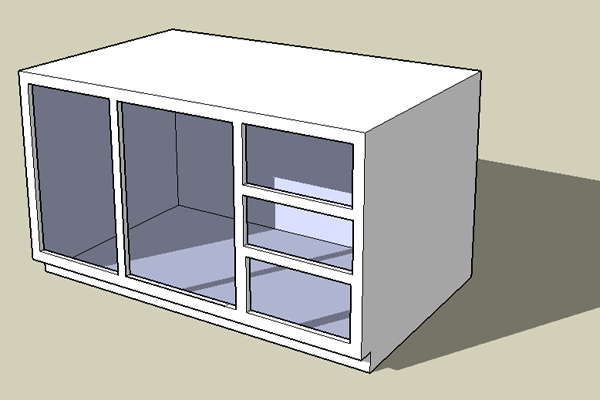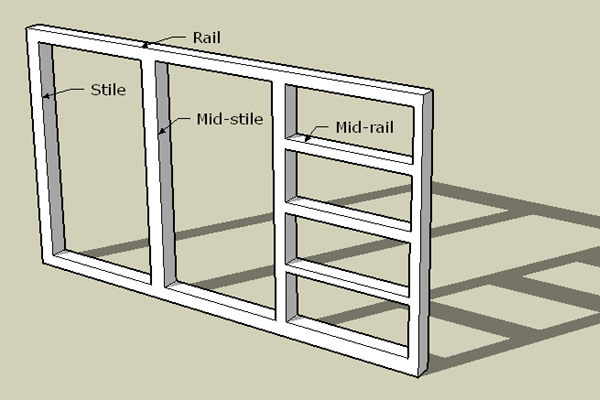
Face frame
Encyclopedia

Cabinet making
Cabinet making is the practice of using various woodworking skills to create cabinets, shelving and furniture.Cabinet making involves techniques such as creating appropriate joints, dados, bevels, chamfers and shelving systems, the use of finishing tools such as routers to create decorative...
is the frame fixed to the front of a cabinet carcass which obscures the edges of the carcass and provides the fixing point for doors and other external hardware. A face frame provides strength to the front of a cabinet and is also considered a visual feature of particular styles of furniture.
Face frames are a feature of traditional cabinetry which have been replaced in many instances today by frameless cabinets which make use of edge banding
Edge Banding
Edge Banding or Edgebanding can be made of different materials . It is used in carpentry and furniture-making. Edge banding is used to cover the exposed sides of materials such as plywood, particle board or MDF, giving the appearance of a solid material...
to conceal the edge of the carcass. This is most commonly seen in European modular-style kitchens.
Construction

Woodworking joints
Joinery is a part of woodworking that involves joining together pieces of wood, to create furniture, structures, toys, and other items. Some wood joints employ fasteners, bindings, or adhesives, while others use only wood elements. The characteristics of wooden joints - strength, flexibility,...
. The most common joints used are the butt joint
Butt joint
A butt joint is a joinery technique in which two members are joined by simply butting them together. The butt joint is the simplest joint to make since it merely involves cutting the members to the appropriate length and butting them together. It is also the weakest because unless some form of...
or mortise and tenon
Mortise and tenon
The mortise and tenon joint has been used for thousands of years by woodworkers around the world to join pieces of wood, mainly when the adjoining pieces connect at an angle of 90°. In its basic form it is both simple and strong. Although there are many joint variations, the basic mortise and tenon...
. The frames consist of vertical stiles and horizontal rails. Individual compartments within the cabinet are divided by mid-stiles and mid-rails. Individual drawers are usually separated by mid-rails and mid-stiles occur between doors and wherever vertical partitions exist within the cabinet (see image Parts of a face frame).
The frame members are generally made from plain rectangular stock but are often visually enhanced through the application of cock beading or applied mouldings. Typically a frame member will be between 25mm to 50mm in width, depending upon the application and the desired appearance of the cabinet. For built in cabinets, it is common for stiles that are to abut a wall to be cut wider than the final size so that these may be scribed to the shape of the wall. This compensates for out of plumb or uneven walls, which are common in many houses.

